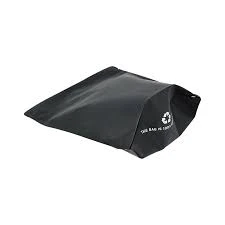- Afrikaans
- Albanian
- Amharic
- Arabic
- Armenian
- Azerbaijani
- Basque
- Belarusian
- Bengali
- Bosnian
- Bulgarian
- Catalan
- Cebuano
- chinese_simplified
- chinese_traditional
- Corsican
- Croatian
- Czech
- Danish
- Dutch
- English
- Esperanto
- Estonian
- Finnish
- French
- Frisian
- Galician
- Georgian
- German
- Greek
- Gujarati
- haitian_creole
- hausa
- hawaiian
- Hebrew
- Hindi
- Miao
- Hungarian
- Icelandic
- igbo
- Indonesian
- irish
- Italian
- Japanese
- Javanese
- Kannada
- kazakh
- Khmer
- Rwandese
- Korean
- Kurdish
- Kyrgyz
- Lao
- Latin
- Latvian
- Lithuanian
- Luxembourgish
- Macedonian
- Malgashi
- Malay
- Malayalam
- Maltese
- Maori
- Marathi
- Mongolian
- Myanmar
- Nepali
- Norwegian
- Norwegian
- Occitan
- Pashto
- Persian
- Polish
- Portuguese
- Punjabi
- Romanian
- Russian
- Samoan
- scottish-gaelic
- Serbian
- Sesotho
- Shona
- Sindhi
- Sinhala
- Slovak
- Slovenian
- Somali
- Spanish
- Sundanese
- Swahili
- Swedish
- Tagalog
- Tajik
- Tamil
- Tatar
- Telugu
- Thai
- Turkish
- Turkmen
- Ukrainian
- Urdu
- Uighur
- Uzbek
- Vietnamese
- Welsh
- Bantu
- Yiddish
- Yoruba
- Zulu
Innovative Designs and Applications of Paper Tubes in Packaging Solutions
The Versatility of Paper Tubes An Eco-Friendly Solution
In an era where environmental sustainability is at the forefront of consumer consciousness, paper tubes have emerged as a versatile and eco-friendly alternative in various industries. From packaging to crafts, these cylindrical structures offer a myriad of applications that not only meet functional needs but also align with the growing demand for sustainable materials.
Paper tubes, primarily made from recycled paper and cardboard, represent a significant step toward reducing plastic waste. Traditional packaging solutions often involve plastic, which can take hundreds of years to decompose. In contrast, paper tubes are recyclable and biodegradable, providing a seamless way to reduce the ecological footprint associated with product packaging. Many companies are now turning to paper tubes to encase their products, whether it's cosmetics, food items, or even wine. This shift not only benefits the environment but also caters to a market that increasingly values sustainable practices.
One of the key advantages of paper tubes is their lightweight nature, which reduces transportation costs and carbon emissions. In industries that rely heavily on shipping, such as e-commerce, this can lead to significant savings and an overall decrease in environmental impact. Moreover, paper tubes can be manufactured in a variety of sizes and strengths, allowing for customized solutions that meet specific product requirements. This adaptability makes them suitable for a wide array of applications, from shipping fragile items to housing promotional materials.
In the arts and crafts sector, paper tubes have gained popularity as a material for DIY projects. Their availability and affordability make them an excellent choice for enthusiasts looking to create functional or decorative items. From pencil holders to intricate sculptures, the only limit to what one can create with paper tubes is imagination. This trend not only encourages creativity but also promotes recycling, as individuals repurpose items that would otherwise contribute to landfill waste.
paper tube

Furthermore, paper tubes are increasingly being recognized in the construction and design industries. Architects and designers are exploring the potential of paper tubes as a sustainable building material. Their strength, when properly engineered, can contribute to the construction of eco-friendly structures. Additionally, the aesthetic qualities of paper tubes can add an organic feel to interior designs, supporting the overall trend of incorporating natural materials into spaces.
Educational institutions are also harnessing the potential of paper tubes in STEM (Science, Technology, Engineering, Arts, and Mathematics) education. Teachers use them in classroom projects to demonstrate principles of engineering, physics, and art. This hands-on approach not only helps students grasp complex concepts but also instills an awareness of sustainable practices from a young age.
Despite their many advantages, it is essential to consider some challenges associated with paper tubes. For instance, they may not provide the same level of moisture protection as plastic counterparts, which can be a concern for certain products. However, advancements in technology are paving the way for innovative coatings and treatments that can enhance the durability and moisture resistance of paper tubes without compromising their eco-friendly nature.
In conclusion, paper tubes represent a valuable resource in our pursuit of a more sustainable world. Their versatility across different industries—from packaging to arts and crafts—underscores their potential as an eco-friendly alternative to traditional materials. As consumers and businesses alike become more aware of their environmental impact, the demand for paper tubes is likely to grow, fostering further innovations and applications that make the most of this sustainable solution. In this light, embracing paper tubes not only contributes to reducing our carbon footprint but also encourages a shift toward a more responsible and creative use of resources.













